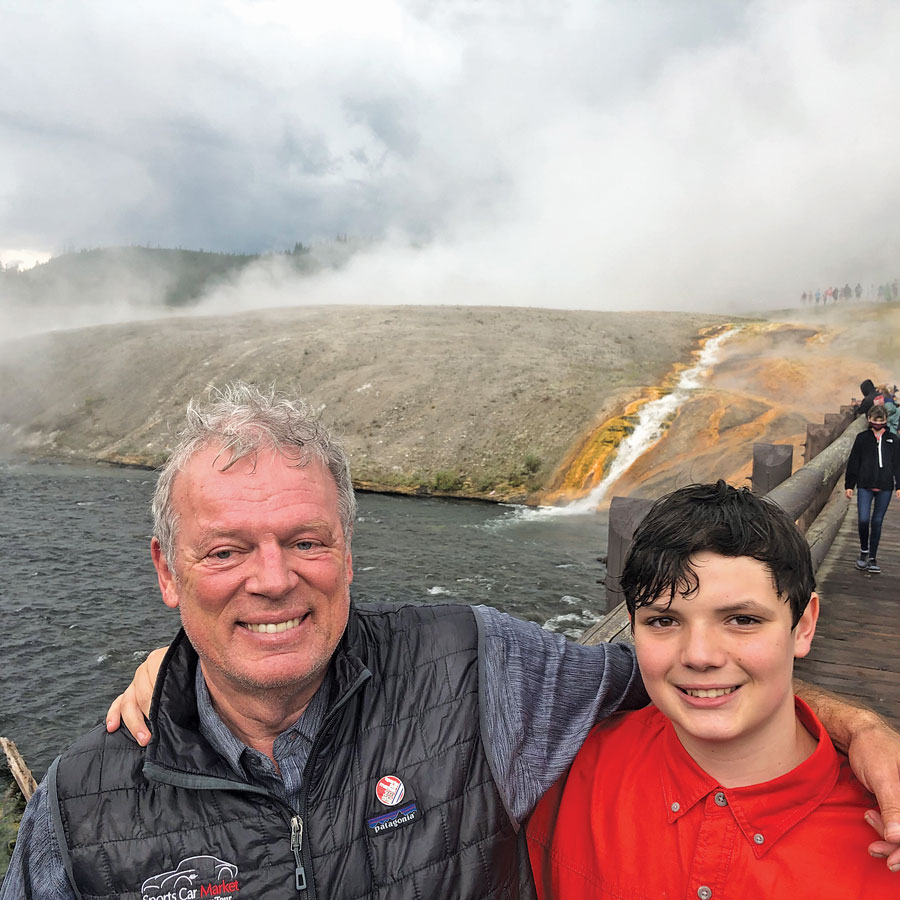
“A journey is a person itself; no two are alike.” — John Steinbeck, Travels with Charley: In Search of America
Buffalo, elk, coyotes and wolves. Yellowstone National Park. A 2,000-mile route. A 500-horsepower Mercedes-Benz. A 13-year-old boy just itching to get out of the house.
Those were the perfect ingredients for this summer’s road trip.
Leaving it all behind
My son Bradley is rapidly leaving childhood behind. Coming into the eighth grade, he is developing a worldview of his own. However, due to COVID-19, this summer has not been full of the expected computer camps and athletic activities. At the very time he is expanding and developing his social skills and outreach, our world is under lockdown.
Of the safe travel options available to us, a week of glamping in Yellowstone National Park had the most appeal. The organizers, Mango Safaris, promised a group of just 10, with four adults and six kids. There would be two naturalist guides with us full time. We all had to test negative for the coronavirus within 48 hours of checking into the camp.
Once we settled on the destination, Bradly and I had to decide on the right car. High-speed cruising capability, comfort and reliability were paramount.
The 1965 Volvo 122 didn’t make the cut. No air conditioner, and we’d have to take an extra week with its 86-hp 4-cylinder at redline the entire time.
The 1971 Jaguar S3 V12 coupe ticked many of the boxes, most notably that it could cruise comfortably at 80 miles per hour. But this was a once-in-a-lifetime trip with my son. The Jag is a 49-year-old British car. I foresaw the possibility of spending days of our trip waiting in Twin Falls, ID, for an ignition part.
Investing in fun
Mercedes guru Dean Laumbach and SCM contributors Philip Richter and Pierre Hedary all recommended an SL55 AMG. I located one with 48,000 collector-owned miles on it. By the time it arrived in Oregon and was fettled by Burback Motors, my total “investment” in the car was $25,000.
With its retractable hard top, it gave us the option of open-air motoring. Between the trunk and the space behind the seats, we could carry all our luggage. The prognosis was good that we could actually leave and return in the same car, with no flatbed tows in between.
We covered 385 miles the first day, taking Interstate 84 up the magnificent Columbia Gorge to Coeur d’Alene, ID. We settled into the SL, decoding the user-cruel climate controls and learning to control the seat massager with its Braille-themed switches. With the top up, the car was remarkably quiet, and at 80 mph, the supercharged engine was barely loping along.
Hitting the drive-through
Bradley and I have always traveled well together. We have a comfortable rhythm, which includes eating and drinking in the car — much to the dismay of my purist friends. We like to be up and out by 8 a.m. after a light breakfast. We drive three or four hours before hitting a fast-food place for lunch. We drive another three hours or so and get to our final destination by four. We have an early dinner, and are in our room, fed, showered and relaxed by 7 p.m.
The next day was long but easy, 342 miles on U.S. 89 to our camping destination near Gardiner, MT, at the north entrance to Yellowstone.
The park experience was remarkable. How fortunate the U.S. was to have Teddy Roosevelt as our 26th president, with his great respect for nature. During our five days there, we watched a coyote chasing a wolf from its den, and observed bison, elk and bears. We hiked past bubbling mud pots and to waterfall overlooks. Every night, we gathered ’round the campfire to roast marshmallows while remarking on the clarity of the night sky.
We did not take the most direct route home. Following U.S. Route 191 south, we had a quick 159 miles on U.S. Route 89 through the Grand Tetons to our next destination, Jackson Hole, WY. We immediately feasted on bison burgers at Sidewinder Tavern.
At every hotel and restaurant on our trip, all patrons were wearing masks and practicing social distancing. We felt safe.
The next day, we took U.S. Route 20 southwest to the Craters of the Moon National Monument, a 175-mile drive. Bradley marveled at the extent of the lava flows, and the evidence they offered of a much more violent time in the earth’s evolution. From there, it was 484 more miles on lightly traveled U.S. 20 to Bend, OR, where we visited with good friend Michael Cottam and his son Benjamin. We admired Michael’s 1950 Bentley Mk VI but declined his offer of trading it for the SL.
We took U.S. Route 26 home, crossing Mt. Hood on a road following the Oregon Trail. Note that their Conestoga wagons lacked air conditioning and anti-lock brakes.
A new modernism
After covering 2,040 miles, the bug-splattered SL was home. I have become a fan of modern technology for long road trips. The comfort of the SL allowed Bradley and me to have conversations (some thoughtful, some not so much) all day long. I didn’t have to keep one eye glued to the water temperature and oil-pressure gauges. I wasn’t constantly wondering if a strange smell was a fan belt slipping.
I’ve had more than my share of long road trips in vintage cars. It’s not that I am done with those, but I now place a high value on comfort and reliability. I no longer anticipate the glory of triumphing over roadside failures. I just want to get in, buckle up and take off.
Bradley and I are already talking about picking up a late-model Porsche Boxster in two years, taking the ferry to Alaska and driving 2,400 miles down the ALCAN Highway to Portland. That would be a great way for him to celebrate getting his permit. ♦